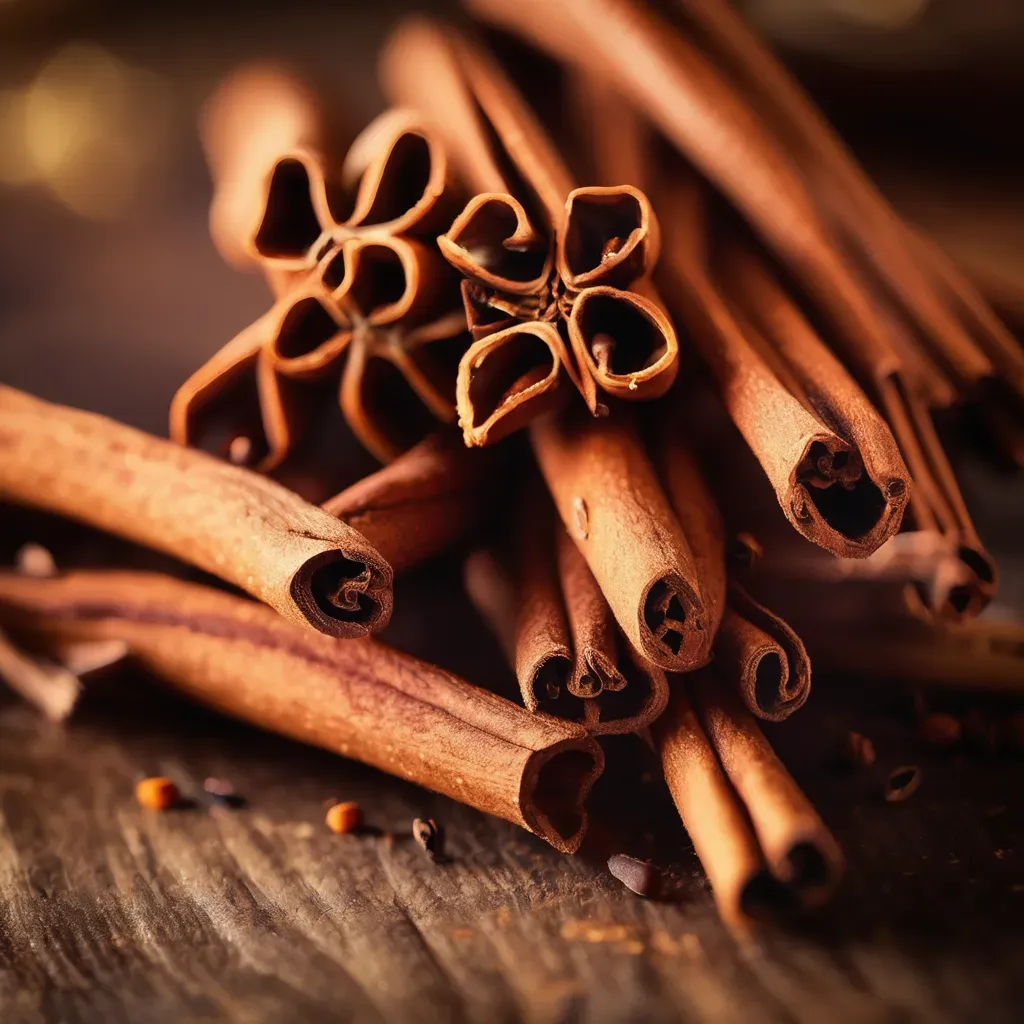Cassia Chinese cinnamon, also known as Cinnamomum cassia, is an evergreen tree native to southern China and widely cultivated throughout Asia. This spice, derived from the bark of the cassia tree, is known for its distinctive flavor and aromatic properties.
Types of Cinnamomum
Cinnamomum is a genus of evergreen trees and shrubs that yield a variety of species known for their aromatic properties. Among these are:
- Cinnamomum verum: Often referred to as “Ceylon cinnamon” or “true cinnamon,” this species is highly valued for its sweetness and delicate flavor.
- Cinnamomum cassia: Commonly known as “cassia” or “Chinese cinnamon,” it features a stronger, spicier flavor and is widely used in culinary applications.
- Cinnamomum loureiroi: Recognized as Saigon cinnamon, it hails from Vietnam and is often considered the most potent variety.
Comparison of Cinnamon Types
| Type | Flavor Profile | Origin | Use Cases |
|---|---|---|---|
| Ceylon Cinnamon | Sweet, delicate | Sri Lanka (Ceylon) | Baking, desserts, drinks |
| Cassia Cinnamon | Spicy, robust | China, Southeast Asia | Savory dishes, snacks, desserts |
| Saigon Cinnamon | Intense, sweet | Vietnam | Baked goods, sweet dishes |
Cassia Chinese Cinnamon vs. Ceylon Cinnamon: What’s the Difference?
The two most common types of cinnamon—cassia and Ceylon—exhibit significant differences in flavor, appearance, and chemical composition.
- Appearance: Cassia cinnamon is darker and forms thicker curled sticks compared to Ceylon cinnamon, which is lighter, smoOther, and has many thin layers.
- Flavor: Cassia has a pungent, strong flavor that can be overwhelming in larger amounts, while Ceylon is milder and sweeter.
- Chemical Content: Cassia cinnamon contains higher levels of coumarin, a natural compound that can be toxic in large quantities. Ceylon, however, is much lower in coumarin.
Composition of Cassia and Ceylon Cinnamon
| Component | Cassia Cinnamon | Ceylon Cinnamon |
|---|---|---|
| Coumarin | Higher levels | Significantly lower levels |
| Flavor notes | Strong, sweet, spicy | Delicate, sweet, floral |
| Color | Dark reddish-brown | Light brown to tan |
Reference Video
The Culinary Uses of Cassia Chinese Cinnamon
Cassia cinnamon is a versatile ingredient used in various cuisines across the globe. Some of the prominent uses include:
- Spice Blends: It forms a crucial component of spice mixtures like Chinese Five-Spice, used to season meat and vegetable dishes.
- Baking: Commonly found in cookies, cakes, and pastries, cassia adds warmth and sweetness to baked goods.
- Savory Dishes: It is often added to stews, soups, and marinades to provide a unique depth of flavor.
- Beverages: Used in teas, coffees, and even hot chocolate, cassia cinnamon infuses these drinks with an inviting aroma and warmth.
Table of Culinary Applications
| Dish Type | Culinary Use |
|---|---|
| Baked Goods | Cakes, cookies, pastries |
| Spiced Dishes | Curries, stews, roasts |
| Beverages | Chai, spiced coffee, hot chocolate |
| Flavoring Agent | Chinese Five-Spice, garam masala |
Health Benefits of Cassia Chinese Cinnamon
- Antioxidant Properties: Cassia cinnamon is rich in antioxidants, which help combat oxidative stress in the body.
- Anti-Inflammatory Effects: The anti-inflammatory compounds in cassia help reduce inflammation and may alleviate symptoms of chronic diseases.
- Blood Sugar Regulation: Several studies suggest that cassia cinnamon may help regulate blood sugar levels and improve insulin sensitivity.
- Digestive Health: It can alleviate gas, bloating, and other digestive issues, serving as a natural remedy.
Cassia Cinnamon – Nutritional Breakdown
| Nutritional Element | Content per 1 tsp (2g) |
|---|---|
| Calories | 6 |
| Carbohydrates | 2 g |
| Dietary fiber | 0.4 g |
| Calcium | 28 mg |
| Iron | 0.2 mg |
FAQs about Cassia Chinese Cinnamon
1. Is cassia the same as cinnamon?
No, while cassia is a type of cinnamon, it is distinct from Ceylon cinnamon, which is often referred to as “true cinnamon.” They differ in flavor, appearance, and chemical properties.
2. Can cassia cinnamon be harmful?
In large quantities, cassia cinnamon can pose health risks due to its high coumarin content, which may lead to liver damage in sensitive individuals. It’s best to consume it in moderation.
3. How do I store cassia cinnamon?
Store cassia cinnamon in a cool, dry place away from direct sunlight. Keeping it in an airtight container will help maintain its flavor.
4. Can I use cassia cinnamon in place of Ceylon cinnamon?
Yes, but be aware that cassia has a stronger flavor. Adjust the quantity according to your taste preference when substituting.
5. How do I know if I am buying real cassia cinnamon?
Look for the origin on the label. Authentic cassia cinnamon is typically labeled as Cinnamomum cassia, while true cinnamon will be listed as Cinnamomum verum.

For further reading and information on the differences between Ceylon and Cassia cinnamon, visit Healthline: Ceylon vs. Cassia.
Overall, cassia Chinese cinnamon is a fascinating spice with a rich history and robust flavor profile, making it a staple in cuisines worldwide. With its myriad health benefits and culinary uses, it’s certainly a spice worth exploring in your cooking endeavors.
